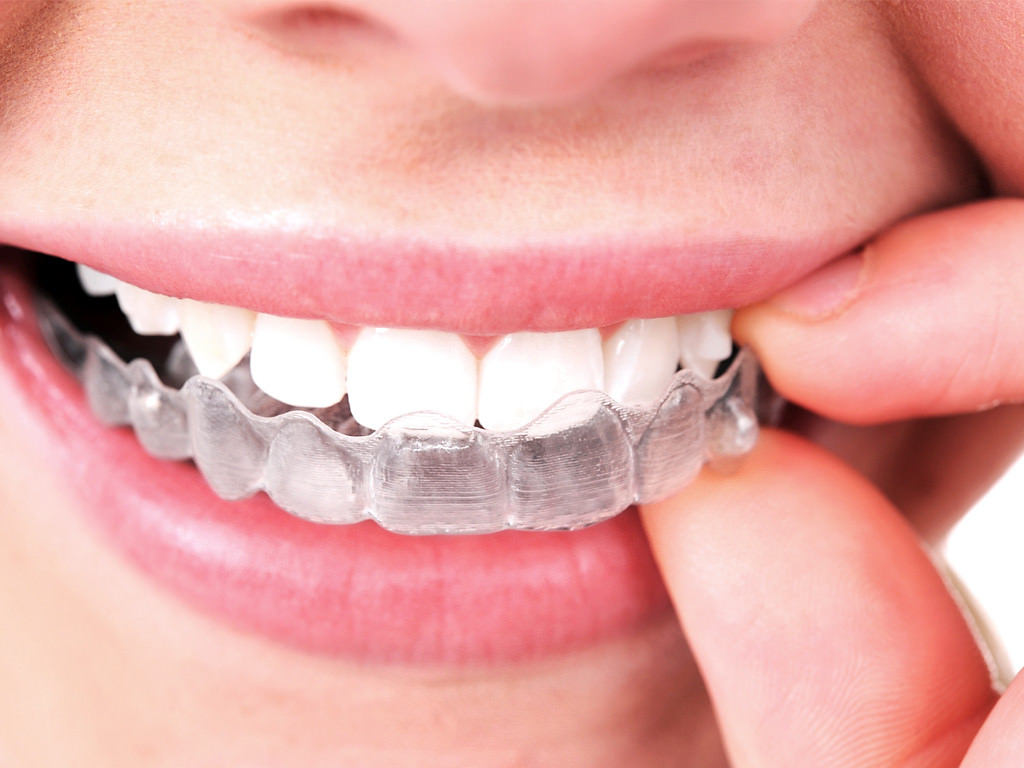Straightening teeth with Invisalign can give people the confidence to smile wide. But can Invisalign literally widen a smile—meaning, can it move teeth enough that more are visible when a patient smiles?
The success of Invisalign at widening a smile depends on the alignment problem of the teeth. When teeth are crowded together, they may not appear as wide as they could if they were straight. Also, some people have a narrow maxillary dental arch, also known as a narrow smile. This has more to do with the patient’s bone structure and shape of their palate than the straightness of their teeth. Some of these dental issues are easier to correct than others.
What is a Narrow Smile

The simplest way to determine the wideness of a smile is to count the number of teeth that show when a person smiles naturally. Seeing six or fewer front teeth indicates a narrow smile.
Having what’s called a narrow smile is fairly common. It means that a person’s upper jaw and palate have a more tapered shape than the average mouth. The maxillary arch (see above) formed by the upper teeth might come to a slight point at the front instead of a gradually sloping curve. Extreme cases can look more like the letter V than the letter U.
Some narrow smiles are simply the result of heredity. Just like eye color or other facial features, the basic shape of the jaw can be inherited too. The maxillary arch can also narrow with age. Over time, teeth can start to tip inward. As this happens, the space at the corners of the mouth between the teeth and cheeks (called buccal corridors) expands. The back teeth end up in the shadows of those “corridors”, adding to the narrowed look. The jaw will look narrower, and the cheeks may even appear to be sunken in.
There are extreme cases when a narrow smile might make an overbite, underbite, or crossbite (called malocclusions) more pronounced. There could be breathing problems if the patient has trouble closing their mouth. Some people might develop a lisp or difficulty pronouncing certain words. Correcting issues like these should be a priority.
Many people can live with a narrow smile and never experience any serious dental problems, but want to have it fixed for cosmetic reasons. Widening a smile with Invisalign, braces, or other methods might be possible, depending on just how much widening needs to be done.
Can a Narrow Smile Be Fixed?

Children with narrow smiles are often given palatal expanders before other orthodontic treatments like braces. The device is attached to a child’s back teeth and spans the roof of their mouth. It is gradually expanded outward by turning a small key or screw, widening the upper jaw bone.
Palatal expanders work on children because the jaw hasn’t fully developed yet. By about age 13, the bones are fully grown and start to permanently fuse together. Instead of the traditional palatal expander, an adult will need an implant-supported device (or surgery).
Small implants can be placed directly into the maxillary bone and an expander is attached to them. Surgically Assisted Rapid Palatal Expansion (SARPE) is another option. While under general anesthesia, the patient’s palate is split, and an expander is surgically attached. Like traditional expanders, both implants and surgically implanted expanders are adjusted a little bit each day to gradually move the jaw bone.
Expanders are an effective way to fix a narrow smile by actually moving the bones and widening the dental arch. Once that’s complete, other teeth straightening treatment can begin.
Widening a Smile With Invisalign or Braces

If an arch is not narrow enough to need an expander, or if an expander has already completed its work, the teeth can be straightened to make a smile appear wider. Braces and Invisalign can both widen a smile and fix other alignment issues.
It’s important to remember that widening a smile with Invisalign or braces doesn’t actually widen the jaw bone at all. With a severely narrow maxillary arch that comes to a point, there may not be a noticeable change to the smile’s width without an expander. What orthodontic devices like braces and Invisalign can do is move the teeth into a position that gives the appearance of a wider smile. For example, if a patient has very crooked front teeth, simply straightening them out so they all line up and face forward will automatically make the smile look wider. Even moving teeth a few millimeters can have a noticeable impact.
There are several factors that make Invisalign desirable. They are discreet, comfortable, and removable. But they won’t work for every problem. First, a patient needs to determine if they can use Invisalign, or if braces will get better results. Braces are usually a better choice to fix pronounced malocclusions and severely crooked teeth. Invisalign, however, does a successful job correcting mild to moderate crowding, gaps, and crookedness.
What Can Invisalign Do to Widen a Smile?

If Invisalign is a good option for a patient’s alignment issues, a series of clear plastic aligner trays will be created based on 3D images of the teeth. These are worn for about 22 hours each day and traded for new trays every two weeks.
Under the treatment plan created by the dentist, the patient can expect their teeth to gradually shift into place. For a narrow smile, this means that the top front teeth will begin to turn toward the front if they are crooked, and spread apart if they are crowded together. Eventually, when they are all in a straight line across the front, the buccal corridors will appear smaller and a nice wide smile will be seen.
Braces apply more pressure to teeth than Invisalign, so they can typically move them further. This is why they’re often recommended for cases of more serious misalignment. But the concept is the same—straightening teeth and evening them out can widen a smile.
Getting Help to Widen a Smile

Patients should talk to their dentist about their desire for a wider smile. Our online search tool can help find one based on location. The dentist can assess if the teeth can be helped with straightening or if there is a more serious case of a narrow maxillary arch that will need an arch expander.
If the dentist feels you’re a good candidate Invisalign can have you flashing a wider smile in no time!


